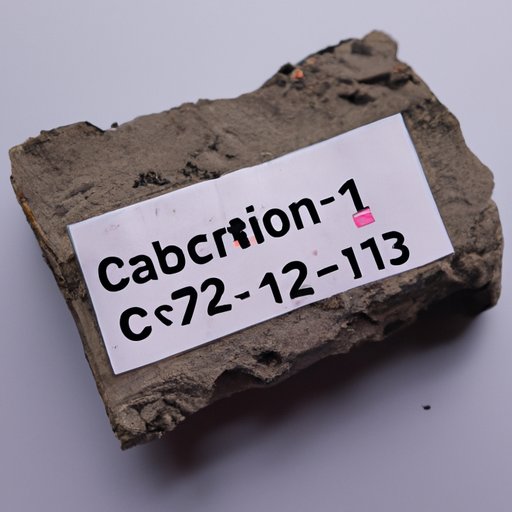Introduction
Radiocarbon dating is a method used to determine the age of objects that are thousands or even millions of years old. This technique relies on the fact that all living organisms absorb carbon from the atmosphere and incorporate it into their tissues. Radiocarbon dating can be used to date organic material as far back as 60,000 years ago. The purpose of this article is to explain how radiocarbon dating works and to discuss its various applications.

An Overview of Radiocarbon Dating
Radiocarbon dating is a type of absolute dating which uses the decay of carbon-14 atoms to estimate the age of an object or sample. Carbon-14 is a radioactive isotope of carbon which is found naturally in the environment. It is produced in the upper atmosphere by cosmic rays from the sun, and is constantly replenished in the atmosphere. All living organisms absorb carbon from the atmosphere and incorporate it into their tissues, so that when they die, the amount of carbon-14 in their tissues begins to decrease over time.
Exploring the Basics of Radiocarbon Dating
The chemistry behind radiocarbon dating is relatively straightforward. Carbon-14 is composed of two neutrons and six protons, and is unstable at room temperature. Over time, the unstable carbon-14 atoms break down and transform into nitrogen atoms. This process is known as beta decay. By measuring the amount of carbon-14 in a sample, scientists can estimate the age of the sample by calculating how long it has been since the carbon-14 atoms began to decay.
Carbon-14 is used in radiocarbon dating because it is relatively abundant in the environment, and it is also very stable. The half-life of carbon-14 is 5,730 years, meaning that after 5,730 years, half of the original sample of carbon-14 will have decayed. This makes it possible to accurately measure the age of a sample up to 60,000 years old.
A Step-by-Step Guide to Radiocarbon Dating
Radiocarbon dating is a complex process which involves several steps. The first step is to collect samples for testing. This can involve anything from archaeological remains to geological samples. Once the samples have been collected, they must then be processed to remove any contaminants which could interfere with the dating process. This includes removing any organic materials such as plant matter, as well as any metals or other materials which could affect the accuracy of the results.
Once the samples have been processed, they must then be analyzed using a specialized instrument called an accelerator mass spectrometer (AMS). This instrument measures the amount of carbon-14 present in the sample, and calculates an age based on the rate of decay of carbon-14 atoms over time. The results of the analysis are then compared with other samples in order to draw conclusions about the age of the sample.

Investigating How Radiocarbon Dating Has Evolved Over Time
Radiocarbon dating has been used for decades to accurately date archaeological and geological samples. The technique was first developed in the 1940s by Willard Libby, and has since been refined and improved. In recent years, advances in technology have allowed for more precise measurements and greater accuracy.
One of the most significant advances has been the development of new methods for measuring the amount of carbon-14 present in a sample. This has allowed scientists to date samples much older than previously thought possible. For example, the oldest sample ever dated using radiocarbon dating is a piece of charcoal from South Africa which is estimated to be around 70,000 years old.

Examining the Various Applications of Radiocarbon Dating
Radiocarbon dating is one of the most widely used scientific techniques in the world. It has many applications in fields such as archaeology, geology, and forensic science. In archaeology, radiocarbon dating is used to date ancient artifacts and remains. In geology, it is used to date rocks and minerals. In forensic science, it is used to date human remains and other evidence in criminal investigations.
Radiocarbon dating can also be used to study climate change over time. By measuring the amount of carbon-14 in the atmosphere, scientists can gain insights into past climates and environmental conditions. This can provide valuable information about the effects of climate change on our planet.
Conclusion
Radiocarbon dating is a powerful tool which has revolutionized the field of archaeology, geology and forensic science. It is a reliable and accurate way to date objects and samples which are thousands or even millions of years old. By understanding the basics of radiocarbon dating, researchers can gain valuable insights into the past and use this knowledge to make informed decisions in the present.
As technology continues to improve, radiocarbon dating will become even more precise and accurate. This will enable researchers to gain a better understanding of our planet’s history and help us to better prepare for the future.
(Note: Is this article not meeting your expectations? Do you have knowledge or insights to share? Unlock new opportunities and expand your reach by joining our authors team. Click Registration to join us and share your expertise with our readers.)
